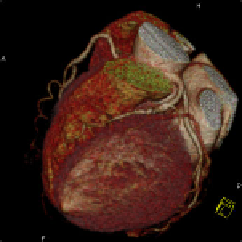Information Technology Reference
In-Depth Information
opportunities for using selected artificial intelligence methods to semantically
analyse selected medical images. In particular, he will present attempts at using
linguistic methods of structural image analysis to develop systems for the cogni-
tive analysis and understanding of medical images, and this will be illustrated by
the recognition of lesions in coronary arteries of the heart. The development of
such systems is aimed at supporting the early diagnostics of selected heart disor-
ders using the automatic semantic interpretation of lesions. This goal can be
achieved if the tools developed (e.g. using linguistic formalisms) allow the com-
puter to penetrate the contents of the image, and not just its form. The image se-
mantics produced by applying the above formalisms support a deeper reasoning
about disease factors and the type of therapy. The problem undertaken is impor-
tant because the identification and location of significant stenoses in coronary ves-
sels is a widespread practical task.
A broad range of opportunities for obtaining image data, e.g. by diagnosing the
heart using computer tomography (CT), coronary artery angiography or intra-
vascular ultrasonography (IVUS), as well as the 3D reconstruction of the exam-
ined coronary vessels produced by rendering provide huge amounts of information
to the diagnostician [6][8][13][15] (fig. 1.).
Fig. 1
The 3D reconstruction of a beating heart produced using a Somatom Sensation Car-
diac 64 spiral CT scanner [4]
Such a large volume of information is, on the one hand, useful as it allows the
proposed right diagnosis to be formulated very competently, but on the other, too
much information frequently makes it difficult to take an unambiguous decision,
because a data overload can be as much of a problems as a deficit of it. This
means that regardless of using state-of-the-art, expensive medical apparatuses, the
images produced do not contribute to improving the accuracy of diagnoses to the
extent expected when the decision was made to buy the apparatus. This paradoxi-
cal effect is mainly due to the fact that image data acquired using very advanced
methods is usually assessed just visually and qualitatively by a physician. If the
specialist is a doctor with high qualifications, this intelligent, although not com-
pletely formalised interpretation method can yield splendid results. However, if
the image is to be assessed by someone with less experience and possibly poorer

Search WWH ::

Custom Search